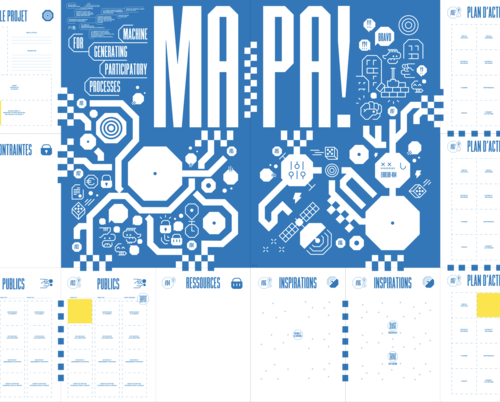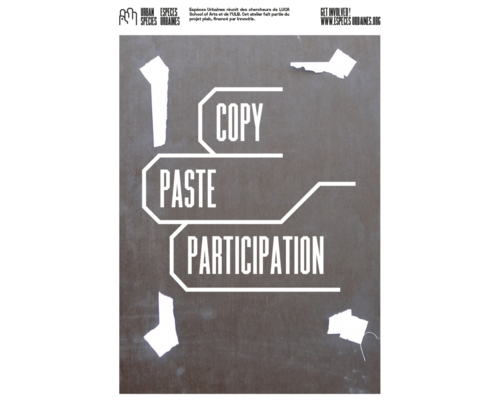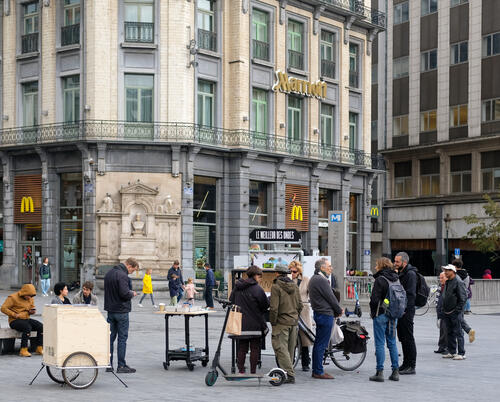Interventions
Pieces of the pietonnier
‘Pieces of the Piétonnier’ was an intervention that put the historical significance of the recent construction works on the Brussels’ city centre pedestrian zone into perspective by inviting people to take a part in the enquiry.
In our practice of researching citizen participation, we put particular emphasis on what triggers people to act, what influences them, what interests them. One element which stands out in our enquiry into ‘objectal participation’ is the ubiquity of tear-off tab posters in the streets of Brussels. The ubiquity — and supposed popularity — of such objects puzzled us. We decided to test whether people were interested in the subject displayed on the poster, or whether it was the mere pleasure of tearing the paper away which was driving them to interact with these objects. In order to test this, we displayed some posters which were either ironic "do you like to tear-off paper tabs?" or blank (a blanc poster with tear-off tabs). Much to our surprise, both worked well and the experiment seemed to make clear that tearing something off and taking something away acted as a trigger for some people.
Subsequently, we wanted to see if we could use this cue to probe passersby on the historical significance of the recent construction works on the Brussels city centre 'piétonnier’. Before our intervention, the construction works had uncovered a large section of old buildings of archaeological interest: the former docking piers in the centre of Brussels. This discovery revealed a stark contrast between two urbanistic changes separated by time. At the beginning of the 20th Century, the Senne, Bruxelles’ main river, was covered for public health reasons and made way for more buildings. Compared to this engineering feat, turning an already existing street into a pedestrian zone seemed a mundane change. We were curious to see how people reacted to this comparison and how they saw this works from a larger historical perspective.
If we wanted to lure passersby on the pedestrian zone by tearing off a part of the city, how were we to do that? How could people be a part of such a historical moment for the city?
One of our co-workers grew up in Berlin at the beginning of the 1990ies and this question brought her back to her childhood, in the aftermath of the fall of the Berlin wall. After the fall, people started to mine the remaining part of the wall, taking out parts of it — first as a souvenir and then as commercial commodities. They realised that they could sell these otherwise worthless pieces of stone as a token of this historical change. Real fake certificates started to pop up to highlight their significance, attesting that these rocks were once part of the wall.
In our installation, we mixed these influences and proposed to passersby to take a piece of the construction works, and offered them a certificate, attesting that this piece was part of the city centre before it was turned into a pedestrian zone. To contextualise the small packages and inform passersby, we put pictures of the Brussels city centre at different historical eras (in the Middle Ages, at the beginning of the 20th Century, in the 1950s, etc..) on our mobile display modules, as well as pictures of the picketers in Berlin.
This installation allowed us to gauge the feelings and experiences of Brussels’ citizens and visitors regarding the piétonnier all while approaching different types of people, from homeless people to diplomats, from other parts of the world.















